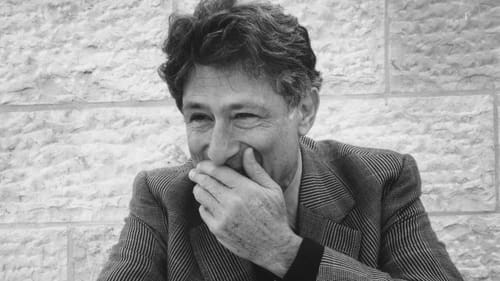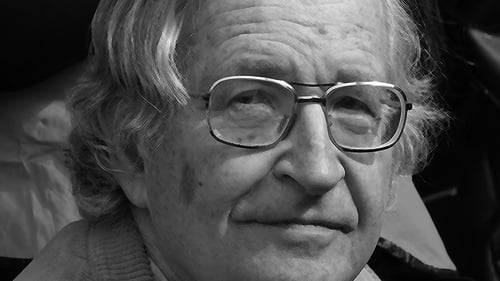Koshiro Otsu
약력
Koshiro Otsu (大津 幸四郎 Otsu Koshiro, 1934 - 28 November 2014) was a Japanese cinematographer and film director. Otsu is one of the most famous cinematographers in Japanese film history. He joined Iwanami Productions in 1958. After going freelance, he worked with legendary director Ogawa Shinsuke on The Oppressed Students (1967) and Summer in Narita (1968), with Tsuchimoto Noriaki on Prehistory of the Partisans (1969), Minamata: The Victims and Their World (1971), and many other films.

Director of Photography
The Wages of Resistance is a feature-length documentary film that portrays an "extended span of time" of the protests against building Narita International Airport which have continued from the 1960's to today through documenting monologues of those whose lives were twisted by the movement.

Director
The Wages of Resistance is a feature-length documentary film that portrays an "extended span of time" of the protests against building Narita International Airport which have continued from the 1960's to today through documenting monologues of those whose lives were twisted by the movement.

Camera Technician
With the passing of Nakazawa Keiji in December 2012, Barefoot Gen’s Hiroshima now stands as the manga artist’s last message of peace to the world. Mr. Nakazawa recounts his life, from the aftermath of the atomic bombing up until the days he created his acclaimed manga series Barefoot Gen (Hadashi no Gen), by exploring sites of painful memories in Hiroshima. Through Mr. Nakazawa’s story, and his original art work, Barefoot Gen’s Hiroshima illuminates the nature of war and nuclear weapons, urging us not to repeat the past.

Cinematography
Before World War II, Ikego village was an idyllic agriculture community. The Imperial Navy took over the village and the hills to build the largest ammunition preserve in Asia. When Japan lost, these facilities were taken over by the US Navy, and are now housing for the American soldiers.

Director of Photography
2003년 9월 팔레스타인 출신 미국인이자 뛰어난 학자였던 에드워드 사이드가 죽었다. 2004년 봄 사이드의 묘소는 그가 성인으로 대부분의 삶을 살았던 뉴욕이 아니라 또 그가 태어났던 팔레스타인이 아니라 레바논의 작은 마을 브루마나에 마련되었다. 이 영화는 사이드의 복잡했던 삶을 상징하는 그의 묘소에서 시작한다. '아웃 어브 플레이스'는 아랍, 이스라엘, 미국의 사상가들의 인터뷰를 가이드 삼아 에드워드 사이드의 기억과 그가 남겨놓은 유지를 통해 사이드가 그의 삶 내내 쟁취하기 위해 싸웠던 화해와 공존에 대한 전망을 탐사하기 위한 여행이다. 이 영화는 복잡한 강제이주의 면면을 세심히 관찰한다. 험난한 역사의 조류에 휩쓸린 팔레스타인 땅과 그 주민들, 주변국에서 피난민으로 살아야 했던 그들의 삶, 디아스포라의 오랜 박해에서 살아남아 전 세계에서 이스라엘로 돌아오는 유대인들, 그리고 희생자이자 가해자로서의 그들의 뒤섞인 정체성으로 인한 뿌리깊은 갈등이 그 것이다. 이 영화는 사이드와 함께 이스라엘과 팔레스타인 젊은이들 사이에 음악을 통해 화해의 장을 마련하는 프로그램을 시작했던 다니엘 바렌보임의 추도강의에서의 솔로피아노 연주로 조용히 끝이 난다.

Cinematography
Living in a slum damaged by the atomic bomb and watching elderly first-generation zainichi hibakusha (atomic bomb survivors) pass away one after another, Pak felt compelled to break their silence with this documentary, her first. Using up all her savings and going into debt, she teamed up with cinematographer Otsu Koshiro and collected these testimonials from zainichi North and South Koreans living in Hiroshima and South Korean hibakusha visiting Japan for medical treatment.

Director of Photography
In 2005, sixty years after the end of World War II, the conservative Japanese government is pressing ahead with plans to revise the nation's constitution and jettison its no-war clause, Article 9. This documentary places the ongoing debate over the constitution in an international context:

Director
This documentary follows one of the creators of the japanese dance Butoh, Kazuo Ohno, with 95 at the time (now he's with 101) and his son, Yoshito Ohno.

Director of Photography
This documentary compiles a series of Noam Chomsky's interviews and lectures that address the events of 9/11.

Director of Photography
일본 교토부 남단의 오야미자키 정에 사는, 지적 장애가 있는 22살의 이마무라 하나꼬와 그 가족들의 일상을 그린 다큐멘터리. 이마무라 하나꼬의 어머니 이마무라 치사는 먹고 난 음식을 방 안에 늘어놓는 딸의 기벽을 '음식 아트'라 명명하고 계속 사진을 찍어 간직한다.

Director of Photography
A documentary portrait of Miho Shimao, widow of renowned Japanese writer Toshio Shimao.

Camera Operator
예술가가 된 정신지체인가, 정신지체가 된 예술가인가?
정신지체가 있는 7명의 예술가 이야기. 평범하지 않은 비사회적 가치들로부터 얼마나 매력적인 예술 작품이 탄생할 수 있는지를 보여준다. 사토 마코토의 유연한 스타일은 어렵고 진중한 주제를 부드럽고 흥미롭게 풀어낸다. 예술 작업과 워크숍을 장려하는 정신병동 3곳을 집중 촬영하였으며 이를 통해 예술이란 무엇인가라는 근본적인 문제를 탐구한다. 이 영화는 감독과 관객 모두에게 흥미로운 담론이다.

Cinematography
This odd three-parter purports to map the metaphysics of the interpersonal universe, dividing its trio of tales into three, different-toned “planets.”

Director of Photography
This film is a record of the first Yamagata International Documentary Film Festival. It reflects the various ways the festival was given shape by nascent global changes embodied by Perestroika, the Tiananmen Square massacre, and many other contemporaneous events.

Cinematography
Starring Kazuo Ohno, an inspirational figure in Butoh dance.

Director of Photography

Director of Photography
38 years after the Pacific War, 84 victims of a mass suicide ordered by the Japanese military were uncovered in a cave in Yomitan village. This film contains the testimonies of some of the survivors, the story of a sculptor leading bereaved family members in creating a statue of peace, and the resistance of a group of girls against the raising of the Japanese flag at the high school graduation ceremony.

Director of Photography
Japanese drama film.

Director of Photography
1980 Japanese film distributed by Shochiku.

Director of Photography
Film distributed by ATG.

Cinematography
My Town, My Youth is an inspiring film shot twenty years after the official recognition of the disease and focuses on a group of young people (many born with the disease) as they mobilise to keep their cause visible by organising a concert by the popular enka singer Ishikawa Sayuri.

Director of Photography
An update to the story of Minamata disease, going up to 1976

Director of Photography
Fujishita Kumi is an ordinary office lady. Longing to escape her poor fishing village for a life in the city, she came to Tokyo. One day while alone in the office, she's spotted rolling up her pantyhose by the window cleaner Kurata Katsuo. This was to be their first encounter. Completely enchanted by Kumi, Katsuo does everything he can to get close to her. Katsuo is a man with a terrible past. With the death of his coal miner father, his family was broken up and he was forced to follow in his father's footsteps laboring away in the mud. In spite of this, Katsuo still has dreams. He dreams of living in Resiporuko, a utopian fantasyland that exists only in his imagination. When Katsuo and Kumi finally meet they find themselves unable to communicate. Katsuo spends all his time talking about Resiporuko with a starry look in his eyes, while Kumi dreams of living the high life in the city. One day when the two travel to the seashore, they discover a wounded seagull.

Cinematography
A medical perspective of Minamata disease in three parts - 1) Progress of Research; 2) Pathology and Symptoms; 3) Clinical Field Trials

Director of Photography
The sea around Minamata was heavily polluted with mercury during the 1950s and 1960s from the Chisso Corporation's chemical factory. This highly toxic chemical bioaccumulated in shellfish and fish in the Yatsushiro Sea which, when eaten by the local populace, gave rise to Minamata disease. The disease was responsible for the deaths and disabling of thousands of residents, all around the Yatsushiro Sea. The marine ecosystem was also extensively damaged.

Cinematography
Second film in Tsuchimoto's series on Minamata disease - the victims of Minamata disease negotiate directly with Chisso Corporation (responsible for dumping toxic water into Minamata Bay) for life-long medical care and compensation.

Director of Photography
The first in a series of independent documentaries that Tsuchimoto made of the mercury poisoning incident in Minamata, Japan.

Cinematography
This film documents student preparations for the final phases of the 1969 protests against the renewal of the security treaty.

Director of Photography
In 1968, Ogawa decided to form Ogawa Productions and locate it at the newly announced construction site of Narita International Airport in a district called Sanrizuka. Ogawa chose to locate his company in the most radical of the villages, Heta. Some farmers immediately sold their land; others vehemently protested and drew the support of social movements across the country. Together they clashed with riot police sent in to protect surveyors, who were plotting out the airport. Summer in Sanrizuka is a messy film – its chaos communicating the passions and actions on the ground.

Cinematography
A film made with a group of student and worker activists during the Haneda 1967 protests against Japan’s cooperation with the US and the Vietnam war. The film subverts the conventions of mainstream television news coverage to investigate in great detail the killing of a young protester during clashes with the riot police and thus denounces the increasing use of repressive violence by the government.

Director of Photography
A galvanising documentary about the organised resistance of a group of students barricaded at the Takasaki City University of Economics. The university student struggles at the end of the 1960s in Japan were the culmination of over a decade of protests, social dissent and political unrest. All this gave energy to the student movement, which displayed original and sustained forms of organisation and resistance against the government and which would spread to universities all over the country. Together with the filmmakers of the recently formed collective Jieiso, Ogawa Shinsuke joined a group of students barricading themselves inside the Takasaki City University of Economics. Shot over the course of a year, this film documents the nature of the political discussion and organisation as well as the fierce debates going on among the students and their violent struggles with the authorities. Credit: ICA London




